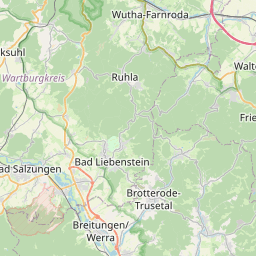






Description: Greenhouse gases like carbon dioxide (CO2) are directly connected to climate change. One of the challenging tasks of the scientific community is to understand and accurately predict future climate changes and to find ways to manage the atmospheric carbon dioxide concentration. Processes and feedbacks that control the carbon cycle must be investigated and understood before their future development can be predicted. Long-term ice core records for the carbon dioxide concentration indicate a significant deviation over the last few decades from the normal glacial - interglacial cycle in atmospheric composition (figure 2). The concentration of carbon dioxide has risen to its current level at least 10 times faster than at any other time and seems to continue to rise sharply (IGBP 2001). It is at most certain that the recent dramatic increase of atmospheric carbon dioxide is the result of human activities but the nature of the interferences and the impact on the global carbon cycle is poorly understood. In particular, understanding the spatial patterns of carbon fluxes on land, ocean and in the atmosphere and the interplay between landuse, ecosystem physiology and disturbance that drive the carbon transfer is necessary. The SIBERIA-II project (similar to its predecessor SIBERIA-I (Schmullius et al. 2001)) analyzes a region which is to a high degree isolated from oceanic climate influences: the central area of Siberia in the northern hemisphere. Several dynamic global vegetation models predict that the land surface will act as a sink for carbon until 2050 and thereafter will possibly saturate (IGBP 2001). It is of extreme interest to investigate the impact such a saturation will have on the global environment. A possible result could be the uncontrolled growth of atmospheric carbon dioxide. A change in the state of the Earth system would then be very likely even if fossil fuel burning has been reduced significantly by the inter- national community. The overall objective of SIBERIA-II is to demonstrate the viability of full carbon accounting (including greenhouse gases (GHGs): CO2, CO, CH4, N2O, NOx) on a regional basis using the environmental tools and systems available to us today and in the near future. The region under study is Northern Eurasia, covering an area of 200 million ha and representing a significant part of the Earth's boreal biome which plays a critical role in global climate. The project uses data from a variety of Earth Observation Satellites, with different spectraly and temporaly characteristics. Remote Sensing and detailed databases of local information are being used with some of the world s most advanced vegetation models to account carbon fluxes between land and atmosphere. From a technical standpoint, the overall objective of SIBERIA-II is to develop a combined monitoring system to yield estimates of carbon sources, sinks and pools at multiple spatial and temporal scales from regional to those relevant to land use policy and
SupportProgram
Origins: /Bund/UBA/UFORDAT
Tags: Fossiler Brennstoff ? CO2-Konzentration ? Schadstoffgehalt ? Vegetation ? Vegetationsdynamik ? Sibirien ? Carbon Accounting ? Klimatologie ? Kohlenstoff ? Kombinationswirkung ? Satellitenbild ? Sensor ? Wind ? Erdbeobachtungssatellit ? Bildverarbeitung ? Lachgas ? Energieträger ? Kohlendioxid ? Kohlenmonoxid ? Kohlenstoffbilanz ? Korrelationsanalyse ? Methan ? Satellit ? Spektralanalyse ? Stickoxide ? Umweltschutzmaßnahme ? Verbrennung ? Zeitreihenanalyse ? Meeresgewässer ? Emissionsminderung ? Mesoklima ? Monitoring ? Ökologische Bewertung ? Flächennutzung ? Schadstoffausbreitung ? Internationale Zusammenarbeit ? Anthropogener Klimawandel ? Stoffbilanz ? Studie ? Daten ? Schadstoffsenke ? Treibhauspotenzial ? Großprojekt ? Asien ? Kohlenstoffkreislauf ? Eurasien ? Treibhauseffekt ? Stoffstrom ? Atmosphärenchemie ? Klimamonitoring ? Klimaentwicklung ? Klimawirkung ? Landschaft ? Ökosystem ? Ozeanographie ? Schadstoffquelle ? Globale Aspekte ? Treibhausgas ? Klima ? Datenbank ? Klimawandel ? Datenerhebung ? Regionale Verteilung ? Atmosphäre ? Fernerkundung ? Untersuchungsprogramm ? Windrichtung ? Ökomodell ? Flächengröße ?
Region: Thuringia
Bounding boxes: 11° .. 11° x 50.91667° .. 50.91667°
License: cc-by-nc-nd/4.0
Language: Englisch/English
Time ranges: 2002-01-01 - 2005-06-30
Accessed 1 times.